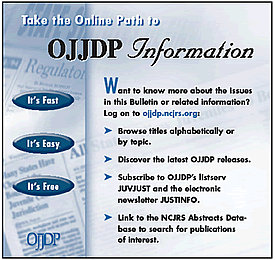References
Arthur, J.A. 1991. Socioeconomic predictors of crime in rural Georgia. Criminal Justice Review 16(1):29–41.
Bachman, R. 1992. Crime in nonmetropolitan America: A national accounting of trends, incidence rates, and idiosyncratic vulnerabilities. Rural Sociology 57(4):546–560.
Blau, P.M. 1977. Inequality and Heterogeneity: A Primitive Theory of Social Structure. New York, NY: Free Press.
Bursik, R.J., Jr. 1988. Social disorganization and theory of crime and delinquency: Problems and prospects. Criminology 26(4):519–551.
Bursik, R.J., Jr., and Grasmick, H.G. 1993. Neighborhoods and Crime: The Dimensions of Effective Community Control. New York, NY: Lexington Books.
Cohen, L.E., and Felson, M. 1979. Social change and crime rate trends: A routine activity approach. American Sociological Review 44(4):588–608.
Elliott, D.S., Wilson, W.J., Huizinga, D., Sampson, R.J., Elliott, A., and Rankin, B. 1996. The effects of neighborhood disadvantage on adolescent development. Journal of Research in Crime and Delinquency 33(4):389–426.
Federal Bureau of Investigation. 1998. Crime in the United States, 1997: Uniform Crime Reports. Washington, DC: U.S. Government Printing Office.
Fitchen, J.M. 1994. Residential mobility among the rural poor. Rural Sociology 59(3):417–436.
Freudenberg, W.R. 1986. The density of acquaintanceship: An overlooked variable in community research. American Journal of Sociology 92(1):27–63.
Heitgerd, J.L., and Bursik, R.J., Jr. 1987. Extracommunity dynamics and the ecology of delinquency. American Journal of Sociology 92(4):775–787.
Kornhauser, R.R. 1978. Social Sources of Delinquency. Chicago, IL: University of Chicago Press.
Laub, J.H. 1983a. Patterns of offending in urban and rural areas. Journal of Criminal Justice 11(2):129–142.
Laub, J.H. 1983b. Urbanism, race, and crime. Journal of Research in Crime and Delinquency 20(2):183–198.
Maguire, K., and Pastore, A.L. 1995. Sourcebook of Criminal Justice Statistics 1994. Washington, DC: U.S. Department of Justice, Office of Justice Programs, Bureau of Justice Statistics.
Osgood, D.W. 2000. Poisson-based regression analysis of aggregate crime rates. Journal of Quantitative Criminology 16(1):21–43.
Osgood, D.W., and Chambers, J.M. 2000. Social disorganization outside the metropolis: An analysis of rural youth violence. Criminology 38(1):81–115.
Osgood, D.W., Wilson, J.K., Bachman, J.G., O’Malley, P.M., and Johnston, L.D. 1996. Routine activities and individual deviant behavior. American Sociological Review 61(4):635–655.
Park, R.E., and Burgess, E.W. 1924. Introduction to the Science of Sociology. 2d ed. Chicago, IL: University of Chicago Press.
Petee, T.A., and Kowalski, G.S. 1993. Modeling rural violent crime rates: A test of social disorganization theory. Sociological Focus 26(1):87–89.
Sampson, R.J. 1983. Structural density and criminal victimization. Criminology 21(2):276–293.
Sampson, R.J. 1985. Neighborhood and crime: The structural determinants of personal victimization. Journal of Research in Crime and Delinquency 22(1):7–40.
Sampson, R.J., and Groves, W.B. 1989. Community structure and crime: Testing social-disorganization theory. American Journal of Sociology 94(4):774–802.
Sampson, R.J., Raudenbush, S.W., and Earls, F. 1997. Neighborhoods and violent crime: A multilevel study of collective efficacy. Science 277(5328):918–924.
Shaw, C.R., and McKay, H.D. 1942. Juvenile Delinquency and Urban Areas. Chicago, IL: University of Chicago Press.
Smith, B.L., and Huff, C.R. 1982. Crime in the country: The vulnerability and victimization of rural citizens. Journal of Criminal Justice 10(4):271–282.
Stark, R. 1987. Deviant places: A theory of the ecology of crime. Criminology 25(4): 893–909.
Swanson, C.R. 1981. Rural and agriculture crime. Journal of Criminal Justice 9(1): 19–27.
U.S. Department of Commerce. 1992. Summary Tape Files 1 and 3, 1990 Census. Washington, DC: U.S. Government Printing Office.
U.S. Government Accounting Office. 1989. Rural Development: Federal Programs That Focus on Rural America and Its Economic Development. Washington, DC: U.S. Government Accounting Office.
Warner, B.D., and Pierce, G.L. 1993. Reexamining social disorganization theory using calls to the police as a measure of crime. Criminology 31(4):493–517.
Weisheit, R.A., Wells, L.E., and Falcone, D.N. 1995. Crime and Policing in Rural and Small-Town America: An Overview of the Issues. Washington, DC: U.S. Department of Justice, Office of Justice Programs, National Institute of Justice.
Wilkinson, K.P. 1984. Rurality and patterns of social disruption. Rural Sociology 49(1): 25–36.

| Previous | Contents | Next |
|
|
|
| Community Correlates of Rural Youth Violence | |